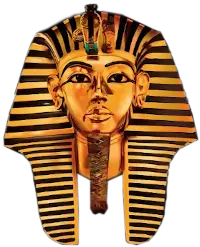
CHAPTER VII:
The Curriculum of the Egyptian Mystery System.
1. The Education of the Egyptian Priests According to Their Orders.
From Diodorus, Herodotus and Clement of Alexandria, we learn that there were six Orders of Egyptian Priests, and that each Order had to master a certain number of the books of Hermes. Clement has described a procession of the Priests, calling them by their Order, and stating their qualifications, as follows:
First comes the Singer Odus, bearing an instrument of music. He has to know by heart two of the books of Hermes; one containing the hymns of the Gods, and the other, the allotment of the king's life. Next comes the Horoscopus, carrying in his hand a horologium or sun-dial, and a palm branch; the symbols of . He has to know four of the books of Hermes, which deal with Astronomy.
Next comes the Hierogrammat, with feathers on his head, and a book in his hand, and a rectangular case with writing materials, i.e., the writing ink and the reed. He has to know the hieroglyphics, cosmography, geography, astronomy, the topography of Egypt, the sacred utensils and measures, the temple furniture and the lands.
Next comes the Stolistes, carrying the cubit of justice, and the libation vessels. He has to know the books of Hermes that deal with the slaughter of animals.
Next comes the Prophetes carrying the vessel of water, followed by those who carry the loaves.
The Prophetes is the President of the temple and has to know the ten books which are called hieratic, and contain the laws and doctrines concerning the Gods (secret-theology) and
Topics
Greek Philospohy is Stolen Egyptian Philosophy
The Memphite Theology is the Basis of all Important Doctrines of Greek Philosophy
Greek Philosophy was Alien to the Greeks
Greek Philosophy was the offspring of the Egyptian Mystery System
The Egyptians Educated the Greeks
The Curriculum of the Egyptian Mystery System
The Pre-Socratic Philosophers and the teaching Ascribed to them
The Athenian Philosophers
1. Socrates
2. Plato
3. Aristotle